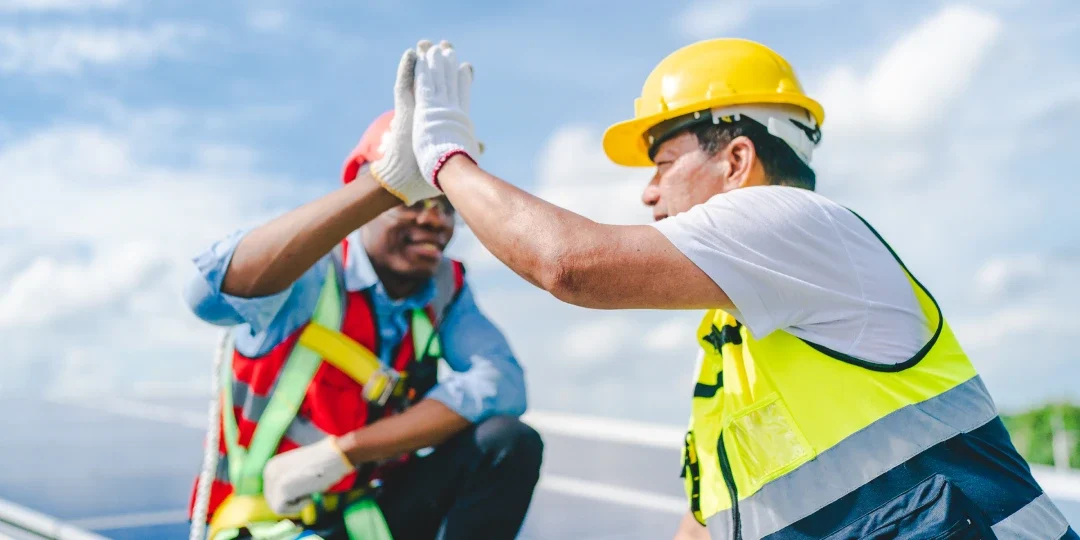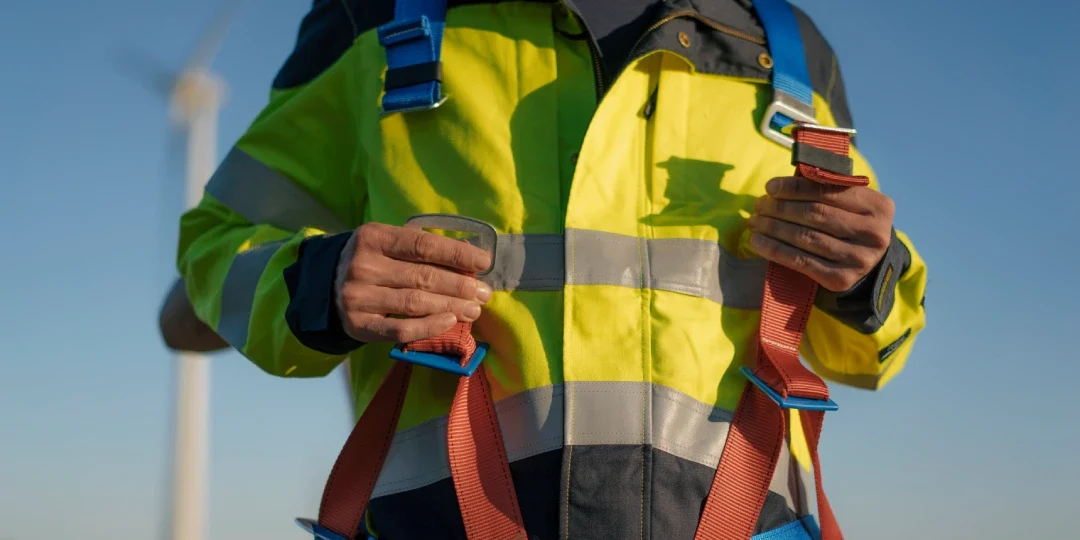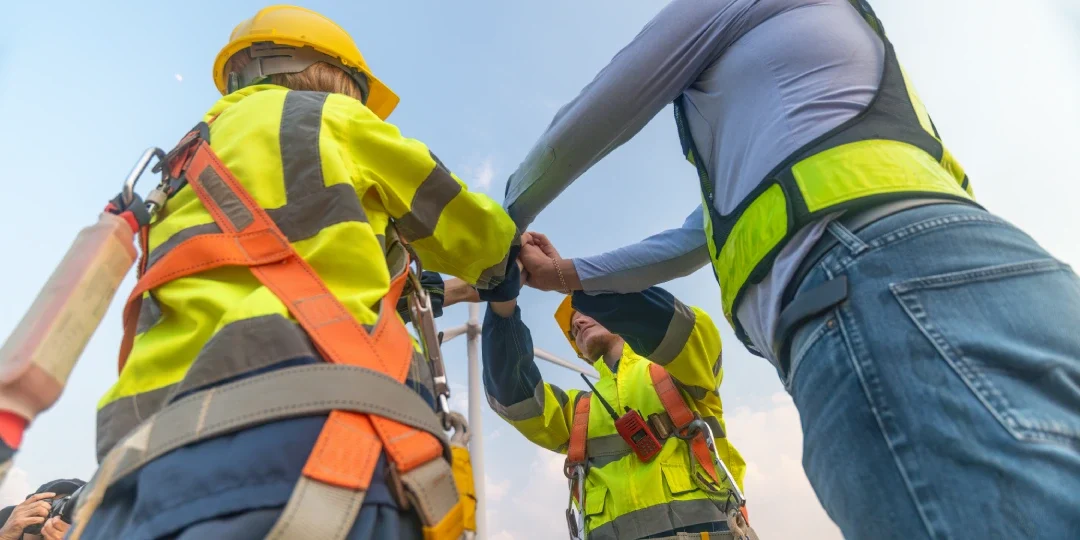Introduction: The High Stakes of Working at Heights
Working at heights introduces a dimension of risk that amplifies the consequences of even the smallest oversight. From steel structures and telecommunication towers to multi-story scaffolding and rooftop installations, elevated work environments demand meticulous attention to safety protocols. The physical vulnerability of workers operating dozens—or even hundreds—of feet off the ground transforms every movement into a potential hazard. In such conditions, the margin for error effectively disappears, leaving only preparation, protection, and prevention as viable safeguards.
The national statistics are sobering. Falls remain one of the top causes of fatal injuries in the workplace, with a disproportionate impact on construction, maintenance, and industrial trades. These incidents are not anomalies—they are recurring outcomes that stem from insufficient fall protection systems, training gaps, or poor oversight. The economic and human cost is significant, and it underscores the necessity of implementing robust fall safety measures on every project, regardless of its scale or complexity.
In a city like Nashville—where construction cranes and scaffolds are as common as traffic lights—the need for expert fall protection has never been more urgent. As urban development pushes vertical boundaries, general contractors, subcontractors, and developers are tasked with maintaining productivity while ensuring compliance with increasingly stringent safety regulations. Division One Safety emerges in this landscape as a vital ally—an organization with the experience, systems, and dedication needed to meet these high-stakes challenges head-on.
Understanding the Real Risks: Fall-Related Injuries in Construction and Industry
Fall-related injuries are often viewed through the lens of unfortunate events, but in reality, they are frequently the result of deeply rooted systemic failures. A lack of pre-task hazard analysis, unclear communication protocols, or the absence of a rescue plan can all contribute to an otherwise avoidable incident. These failures aren’t limited to smaller, disorganized operations—large-scale projects with experienced crews can also fall victim to complacency or overconfidence. This makes continuous education, enforcement, and innovation in fall protection not optional, but essential.
The Occupational Safety and Health Administration (OSHA) consistently cites falls as one of the “Fatal Four” causes of death in construction. Beyond the tragic human toll, there are tangible impacts to project budgets and reputations. Investigations, citations, litigation, and delays can halt progress for weeks or months. What starts as a single misstep can quickly evolve into a chain of logistical nightmares and financial setbacks. For business owners and site supervisors, fall risks carry implications that reach far beyond the perimeter of the jobsite.
Environmental factors compound these dangers. High winds, unguarded edges, slick surfaces, and unsecured tools can all transform a stable environment into a deadly one. Even with personal protective equipment (PPE) on hand, its misuse—or failure to use it at all—renders it ineffective. This is where Division One Safety’s expertise becomes crucial. Their approach doesn’t just address the surface-level symptoms; it targets the root causes by integrating fall protection into the DNA of site operations. Through risk analysis, training, and engineered solutions, they ensure that no aspect of fall safety is left to chance.

Why Fall Protection Demands Specialized Expertise
Fall protection is an intricate discipline that intersects engineering, physiology, and law. It cannot be relegated to a checklist or off-the-shelf equipment. A qualified fall protection expert must understand how forces generated in a fall affect both the human body and the structural anchor system. Misjudging the impact load on a beam or failing to account for the pendulum effect can render even a seemingly safe setup ineffective—or dangerous. The knowledge required is both technical and situational, rooted in field experience and ongoing education.
Selecting fall protection equipment is a science in itself. Different work environments call for vastly different PPE solutions. A harness suitable for steel erection may not be appropriate for roofing or confined space work. Variables such as worker weight, fall clearance, and anchor height all influence gear selection. Then there’s the issue of compatibility—components must function seamlessly together to ensure full-system integrity. Division One Safety excels at evaluating these nuanced factors and delivering custom-tailored systems that prioritize safety and efficiency.
Redundancy is a defining principle in professional fall protection. It’s not enough to rely on a single safeguard. Backup anchor points, secondary lifelines, and emergency response protocols must be integrated into every phase of a project. Division One Safety understands that a comprehensive system is not simply about the gear—it’s about the planning, documentation, training, and continuous oversight that support it. Their team’s specialized expertise means fewer assumptions and more certainties—an approach that protects both lives and livelihoods.
Nashville’s Growth and the Rising Demand for Height Safety
Nashville is experiencing an unprecedented construction surge. From the downtown core to the expanding suburbs, new projects are reshaping the city’s economic and physical landscape. Hospitals, educational institutions, logistics centers, and high-rise residential buildings are going up at a blistering pace. These developments are structurally complex and require work at significant heights—often in crowded, high-traffic environments. The demand for fall protection in this context is not only increasing—it’s evolving in complexity.
Contractors working in Nashville today face more than architectural challenges; they operate under compressed timelines, tighter regulations, and high expectations for safety performance. These pressures make reactive safety measures untenable. Instead, fall protection must be integrated into the earliest stages of project planning. Proactive measures like engineered lifelines, pre-task planning, and real-time monitoring are not luxuries—they are operational imperatives. Division One Safety addresses this head-on, offering turnkey solutions that adapt to Nashville’s high-intensity construction ecosystem.
As the city continues its vertical ascent, so does the risk profile of the job sites within it. Rooftop solar installations, exterior facade work, and elevated MEP (Mechanical, Electrical, Plumbing) systems all require specialized fall protection strategies. Division One Safety’s deep familiarity with local building codes, weather patterns, and project logistics enables them to craft height safety systems that are not only compliant but optimized for performance. Their role in Nashville’s growth is foundational—both literally and figuratively.
Division One Safety: A Leader in Comprehensive Fall Protection
Division One Safety has earned its place as a top-tier fall protection provider in Middle Tennessee through a reputation built on trust, expertise, and results. Their focus isn’t limited to product installation or routine inspections—they provide a full spectrum of fall safety services grounded in industry best practices and regulatory mastery. Their goal is twofold: eliminate preventable fall risks and create operational environments where safety and productivity reinforce one another.
Their strength lies in their holistic approach. Every engagement begins with a deep dive into site-specific challenges. Whether it’s a multi-story concrete frame or a retrofitted manufacturing facility, Division One Safety tailors solutions that account for structural uniqueness, workflow logistics, and worker behaviors. Their use of advanced risk assessment methodologies ensures that all potential hazards are identified early, giving project teams the information and tools needed to mitigate them effectively.
But beyond systems and protocols, Division One Safety brings a human touch to a technical field. Their team is composed of passionate professionals who understand that behind every harness and anchor point is a worker with a family, a livelihood, and a right to return home safely. This ethos permeates every project, turning compliance into culture and tasks into trust-building moments. Division One is not simply a vendor—they are a mission-driven partner committed to elevating the standard of fall protection throughout the Nashville region.

Core Services: From Risk Assessment to On-Site Compliance Oversight
Fall protection at Division One Safety begins long before a harness is donned or an anchor point is installed. Their core service model starts with meticulous, site-specific risk assessments designed to uncover both visible and latent hazards. Every element—from temporary access points and edge exposures to guardrail configurations and weather variability—is carefully analyzed. These evaluations are not static reports, but dynamic tools used to shape every subsequent layer of protection on the jobsite.
Once hazards are identified, Division One Safety crafts tailored fall protection plans that integrate engineered controls, administrative procedures, and personal protective equipment. These plans include precise anchorage specifications, hazard mitigation sequences, and clearly defined rescue protocols. Whether working on high-rise facades or warehouse mezzanines, the company ensures that each site has a strategy aligned with its operational realities. Their goal is simple: eliminate the guesswork and ensure that fall protection is embedded into the DNA of the project.
What sets Division One apart is their ongoing, on-site compliance oversight. Their safety professionals remain actively involved throughout project execution—verifying plan adherence, evaluating worker behavior, and adjusting controls as site conditions evolve. This real-time engagement ensures that fall protection measures are not just designed well but implemented and maintained with integrity. The result is a jobsite where workers are protected, management is confident, and compliance is continuous—not episodic.
Harnessing Compliance: Meeting OSHA and ANSI Standards with Precision
Compliance in fall protection is not a matter of preference—it’s a regulatory mandate backed by strict enforcement and serious consequences for non-adherence. Division One Safety approaches compliance not as a ceiling to reach, but as a foundation to exceed. Their team is intimately familiar with OSHA 1926 Subpart M and ANSI Z359 fall protection standards and uses these frameworks as the baseline for every decision and deployment made in the field.
From ensuring proper anchor point strength and positioning to validating rescue access within a calculated response time, Division One Safety leaves no aspect of regulatory detail unaddressed. They perform pre-installation assessments, document load testing results, and oversee every piece of fall protection gear that goes into service. Compliance becomes a living process—updated in real-time as worksite variables shift or as new regulatory interpretations emerge. Clients benefit from not only peace of mind but documented proof of proactive adherence.
Beyond avoiding penalties or fines, aligning with national standards is about building a culture of safety that respects lives and ensures operational excellence. Division One Safety uses compliance as a strategic advantage, reducing liability exposure, supporting insurance claims defensibility, and fostering trust among contractors, tradespeople, and owners. Their ability to translate complex standards into practical, enforceable protocols makes them a vital ally for any organization operating at elevation.
Equipment Integrity: Quality, Inspection, and Lifecycle Management
The effectiveness of any fall protection system hinges on the quality and condition of its components. A single compromised harness or worn-out anchor could nullify even the most robust safety plan. Recognizing this, Division One Safety places exceptional focus on the integrity and lifecycle management of all fall protection equipment used on site. Their commitment is not just to availability—but to accountability, performance, and traceability.
Every harness, lanyard, retractable lifeline, and anchorage connector is subjected to a documented inspection regime. This includes pre-use visual checks, routine in-service inspections, and periodic third-party verifications. Equipment is tracked throughout its service life, tagged with inspection histories, and retired at the first sign of compromise. Division One’s protocols exceed standard practice, ensuring not just compliance but confidence in the tools protecting every worker.
Clients also benefit from Division One’s guidance on proper equipment storage, usage, and maintenance. Environmental factors such as UV exposure, temperature swings, and chemical contamination are all accounted for in equipment care plans. The result is a safety ecosystem where every piece of gear—from the smallest carabiner to the largest fall arrest anchor—performs as intended, every time. In the realm of fall protection, this level of vigilance is not a luxury—it’s a necessity.

Frequently Asked Questions
1. What types of fall protection services does Division One Safety offer?
Division One Safety provides a comprehensive range of fall protection services, including site-specific risk assessments, engineered fall arrest system design, on-site compliance oversight, equipment inspections, and worker training. Their services cover every phase of a project—from initial planning to active execution—ensuring continuous protection and regulatory compliance throughout the job lifecycle.
2. How does Division One Safety ensure compliance with OSHA and ANSI standards?
Division One Safety rigorously aligns its fall protection practices with OSHA 1926 Subpart M and ANSI Z359 requirements. Their team conducts detailed evaluations of anchor points, develops rescue plans, and maintains full documentation for every fall protection element used on-site. Compliance is treated as an ongoing process, not a one-time task, with protocols updated in real time to reflect changing site conditions and regulatory updates.
3. What makes Division One Safety’s approach to fall protection equipment unique?
Division One Safety places a strong emphasis on equipment integrity through robust inspection protocols and lifecycle management. Each piece of fall protection gear—harnesses, lanyards, lifelines, and anchors—is tracked, tested, and maintained according to strict performance standards. They also educate clients on proper storage and care, ensuring every component remains in optimal condition for safe and effective use.

The Division One Difference: Culture, Consistency, and Control
What truly sets Division One Safety apart in the field of fall protection is the deeply rooted culture that underpins every aspect of their operations. It’s a culture built on precision, accountability, and a genuine concern for human life. From leadership to front-line field technicians, every team member is selected not just for technical competence, but for their alignment with the company’s uncompromising values. These individuals are rigorously trained to understand that fall protection is not just about gear—it’s about stewardship, diligence, and an unwavering commitment to keeping people safe.
This cultural foundation translates into unmatched consistency across job sites. Regardless of the client, project size, or location, Division One Safety delivers the same exacting standard of fall protection. Their processes are meticulously documented and uniformly applied, ensuring that nothing is left to interpretation. This consistency eliminates the variability that often plagues multi-site operations and gives clients the confidence that safety will never be compromised, even under the pressure of tight timelines or changing project scopes.
Control is another defining characteristic of Division One Safety’s approach. They do not outsource critical decisions or dilute responsibility across too many stakeholders. Instead, they maintain robust internal oversight of all planning, implementation, and compliance measures. Their chain of command is clear, their protocols are enforceable, and their communication is transparent. By centralizing accountability and maintaining direct operational control, Division One transforms fall protection from a regulatory obligation into a strategic advantage—one that safeguards both lives and reputations.


